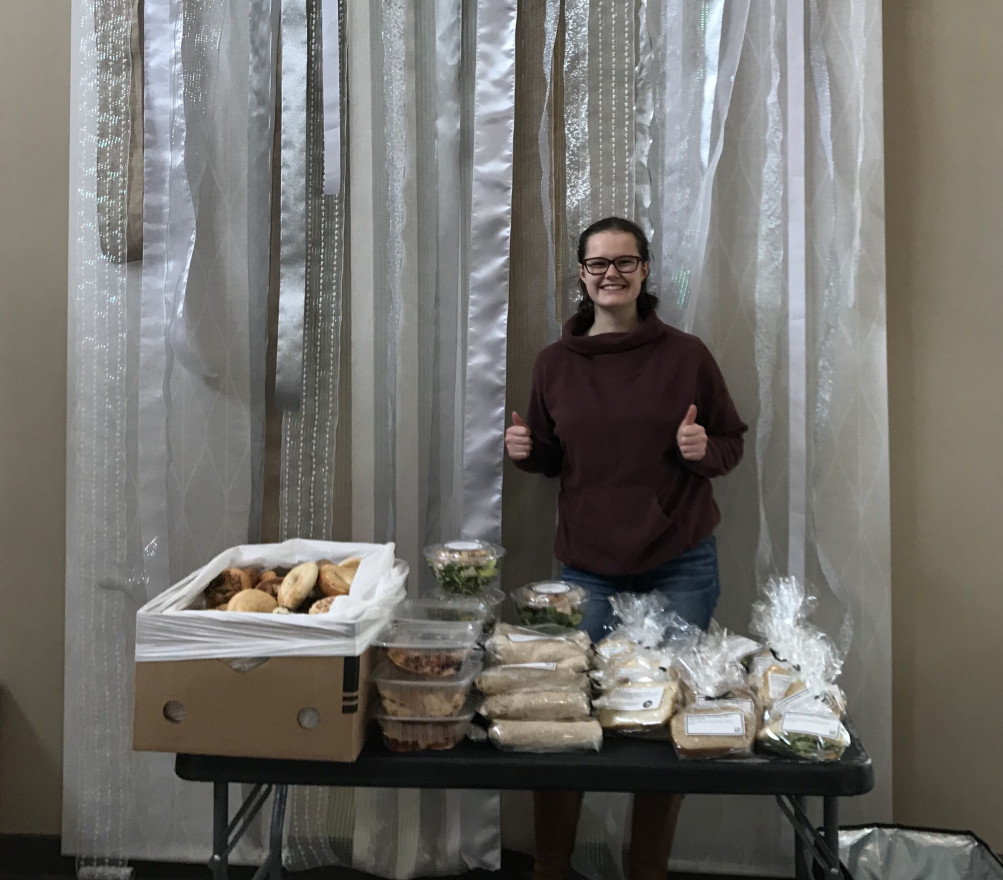
(Greta Hardy-Mittell)

(Greta Hardy-Mittell)
When it comes to sustainability, there are some solutions that just make sense—and usually, they stem from problems that don’t. Food waste and food insecurity are two such linked issues. The USDA estimates that 30-40 percent of the US food supply, or about 133 billion pounds of food, gets wasted every year. And it’s not just food that goes to waste. According to the World Resources Institute, if food waste were its own country, it would rank third in greenhouse gas emissions, behind only China and the United States. Meanwhile, food insecurity continues worldwide; in the United States alone, over 10 percent (14.3 million) of households were food insecure at some point during 2018. For these families, worrying about the environmental impact of their food or even its nutritional value is a luxury they cannot afford. Often, they can barely afford food at all.
In 2011, four students at the University of Maryland, College Park wondered if they could use one of these issues to fix the other. They noticed that their dining halls were throwing out food at the end of every meal, so they began saving this food from the trash can and instead bringing it to organizations that feed people.
The group of students quickly grew, and soon, students on other campuses got involved. In 2013, the group became a national nonprofit comprised of individual college chapters. Thus, Food Recovery Network (FRN) was born.
That same year, students at Carleton College in Northfield, Minnesota began looking to get involved with FRN. Shira Kaufman ’16 ran a dining hall waste audit and found that “plenty of good food was going to waste every day while many people in Northfield and neighboring Faribault did not know where their next meal was coming from.”
But in an article in an October 2013 issue of the college’s student newspaper, the Carletonian, Kaufman was quoted saying that starting a Carleton chapter of FRN would involve “lots of really tricky logistics that would rely heavily on students to be there right after meals.” Kaufman said that the program works at “mostly big schools in cities where they can quickly get the food to points where it can be distributed,” and would be much harder in a small town like Northfield.
Flash forward to 2020. Northfield now hosts not one but two student-run FRN chapters, one at Carleton and the other at nearby St. Olaf College. Carleton’s chapter is one of the oldest and most robust of FRN’s 230 chapters across the country. It was the first in Minnesota at its founding in January 2014—by Kaufman herself.
So how did FRN take off at Carleton in the end? It turns out that students were willing to show up and put in the work, after all. When Kaufman began recovering food six years ago, she said, “I had a lot of my friends roped in to help with recoveries and transporting the food at the very beginning, but by the end of the year we had a pretty large network of volunteers.”
Kaufman and her team also coordinated with Katie McKenna, manager of Carleton’s dining service, Bon Appétit, to get the program rolling. McKenna agreed that students were the driving force behind the organization; “I helped and coordinated,” she said, “but Kaufman did all the heavy lifting!” Kaufman’s hard work has also been mutually beneficial for Bon Appétit. FRN reports the amount of food they recover to McKenna, and if she sees that Bon Appétit is over-producing, they reduce the amount of food they prepare in the first place.
What about the extra food that is still inevitably left over at the end of the night? “Beside the obvious benefit of reducing waste,” McKenna said, “it is a great feeling to know that the food that would have been put into the compost bin is going to feed people who need it.”
Today, Carleton’s FRN chapter is run by eight Program Directors and between 50 and 75 volunteers. These students recover from both of Carleton’s dining halls six nights a week, diverting about 25 pounds of food from the waste stream each night. In recent years, the chapter has also started recovering from Cub Foods and Target, where they collect about 2,500 pounds of food weekly. They then distribute the healthy, locally-sourced meals to six community partners, ranging from the Greenvale Community School to St. Dominic’s Catholic Church to Northfield’s Food Shelf.
And Carleton is just one chapter among 230. Combined, they have recovered 3.2 million meals and prevented 7.4 million pounds of carbon dioxide emissions since 2011. FRN students prove that if enough people are involved, it doesn’t have to be hard to fight food waste, food insecurity, and climate change, all at once.